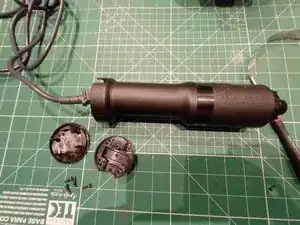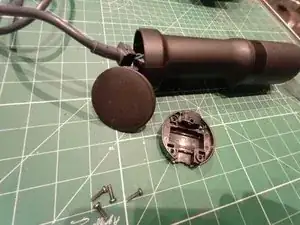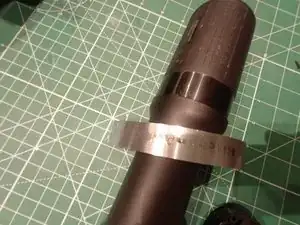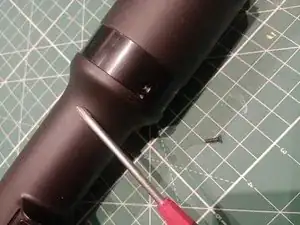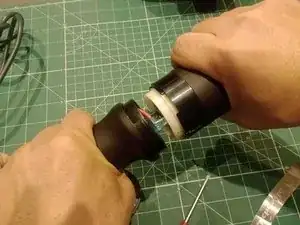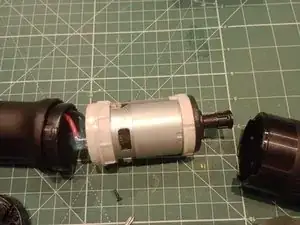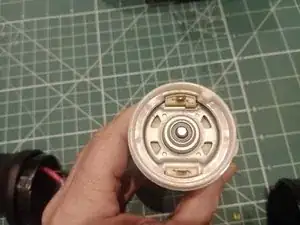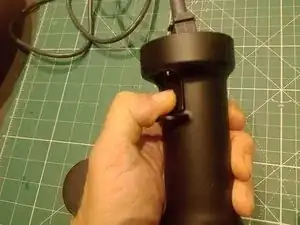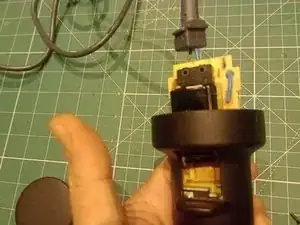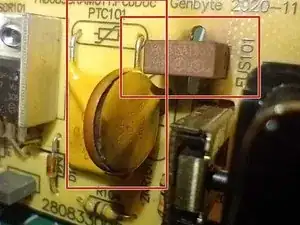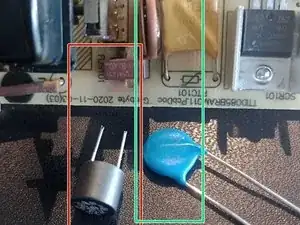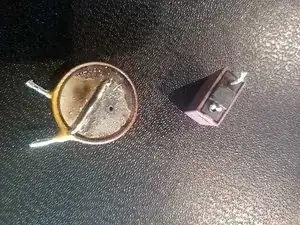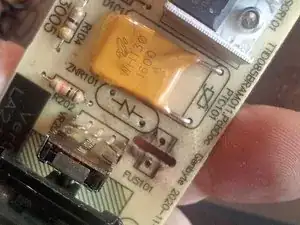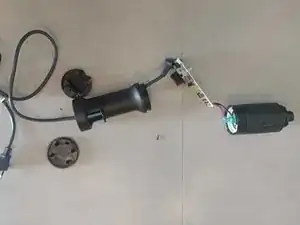Introduction
This KitchenAid hand-held immersion mixer was originally rated for 127V 60Hz. It was plugged into a 220V power outlet and blew some components and stopped working.
The exact specs of the product serviced are:
KitchenAid KEB53APANA 127V 60Hz 180W, manufactured in China, imported and distributed in Brazil by Whirlpool.
This guide shows how to take the mixer apart, identify the blown components and replace them to restore full functionality.
Tools
Parts
-
-
Carefully remove the top lid with fingernails, a guitar pick, or a thin plastic splundger. Use a Phillips screwdriver to remove 4 screws holding down the AC power cable. Keep screws in a safe place.
-
-
-
Carefully remove the silverish KitchenAid label from the central part of the body. It is glued on and is easy to bend and kink, so do it slowly.
-
This exposes a small Philips screw, which has to be removed and kept in a safe location
-
-
-
This step is easy but took me a while to figure out. Hold firmly the top and bottom halves of the mixer's body and gently twist.
-
Two halves separate neatly. Be careful not to strain cables connecting to motor
-
-
-
My unit had a red mark to indicate where the red wire was attached. If yours doesn't have this marking, use a Sharpie Marker to indicate where the red wire connects.
-
Once confident that you'll know where to reconnect motor wires, gently disconnect them.
-
-
-
Press down the speed button while pulling the AC power cables from the top of the unit
-
With a bit of patience and jiggling, the control board will slip out of the holding slots and will be ready for inspection
-
-
-
In my unit, after the overvoltage event, the varistor suffered a catastrophic failure, being blown apart. The fuse (originally rated for 125V, also blew. These polyfuses should not fail like this one did, but, hey, they served their purpose of protecting the rest of the circuit
-
I also inspected the other components visually, and the bridge diodes near the motor wiring with a multimeter (this goes beyond the scope of this guide)
-
Once identified, I ordered the replacement components and waited a few days until they arrived by mail
-
-
-
Identify the pads on the bottom of the printed circuit board which hold the two terminals of the varistor and the two terminals of the fuse
-
With a hot soldering iron, gently heat the pads up, one by one, pushing the terminals back through the board.
-
Clean up both sides of the board with a swab, tissue, or sponge. Be thorough, so as not to leave any vaporized metal or carbon deposits.
-
Insert new varistor and fuse in their appropriate places, and after double checking, solder them on, trimming excess wire leads with cutting pliers
-
-
-
Backtrace your steps, reinstalling control board into top part of the body
-
Insert cable holder plastic lid, screwing on four larger screws (that you kept in a safe place) -- snap on the top lid, gently. It only fits in one position, and snaps on easily. It you meet any resistance, flip it around 180 degrees and try again.
-
Reconnect motor cables from control board onto motor terminals, observing the correct placement of the red wire.
-
Rejoin motor housing with top part of the body, observing the proper alignment of of white plastic ring with tiny hole for smaller Philips screw
-
Carefully insert and tighten remaining screw. The should be no gaps between top and bottom part of the body, and the motor should fit snugly.
-
-
-
If the silvery label is still in good shape, you might want to reattach it to the central part of the body. I used the same glue that was still present on the back side of the label, plus a tiny drop of superglue to pin down a stubborn corner
-
If a company designs a product with a semi-destructive procedure to remove branding while fixing, does it deserve to have its logo on the fixed item? Your call
-
Plug the mixer into a proper outlet (127V in my case). It should not go bang. Press the speed button and it should hum back into motion, almost as good as new
-
This fix worked for me -- but might not work for all overvoltage cases -- depending on the protection mechanism's efficacy. Since the replacement components are cheap and readily available, I'd give it a try anyway. As always, caution is to be exercised while dealing with mains voltage. Good luck.
3 comments
Aqui em casa trituram algo o motor funciona por 3 segundos e desliga.
Thank you so much for this article! I followed your instructions and made it all the way to step 3. I was able to remove the motor and found a small metal piece on the side that had popped out. By pushing it back in, I was able to fix my blender! I really appreciate your detailed guidance. it was incredibly helpful, especially since I couldn’t find this information anywhere else, not even on YouTube or TikTok. Thanks again!
Kate -
Hi Kate, happy to have helped. Made my day!

